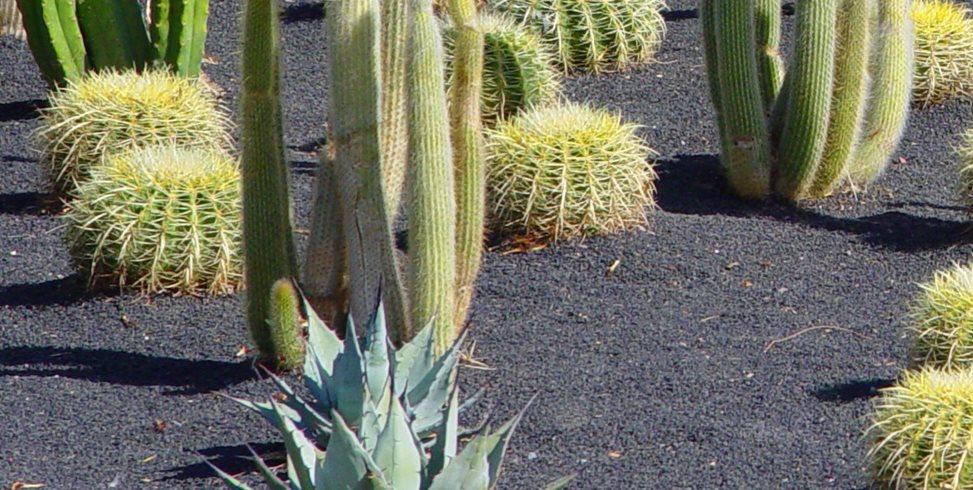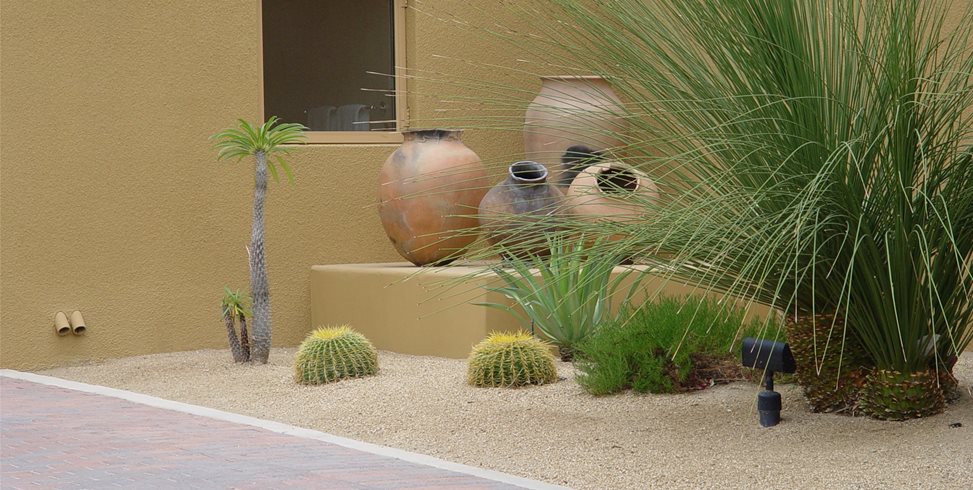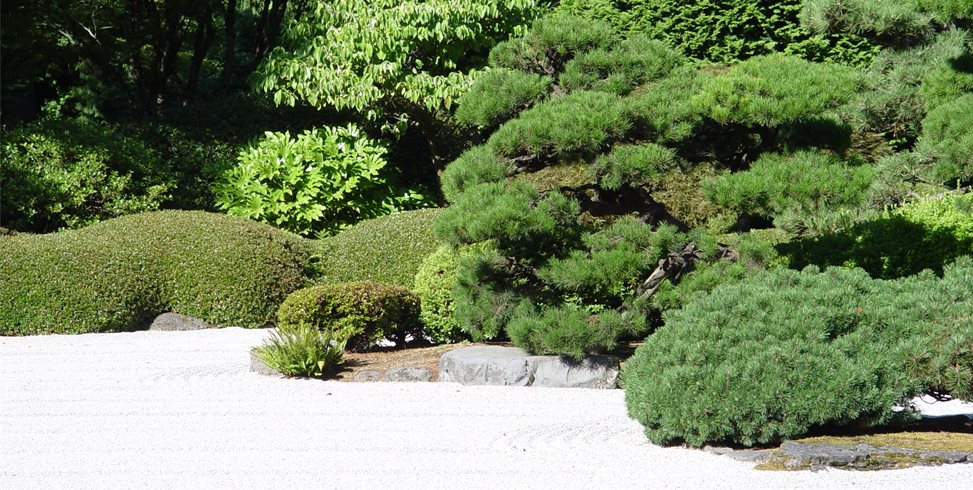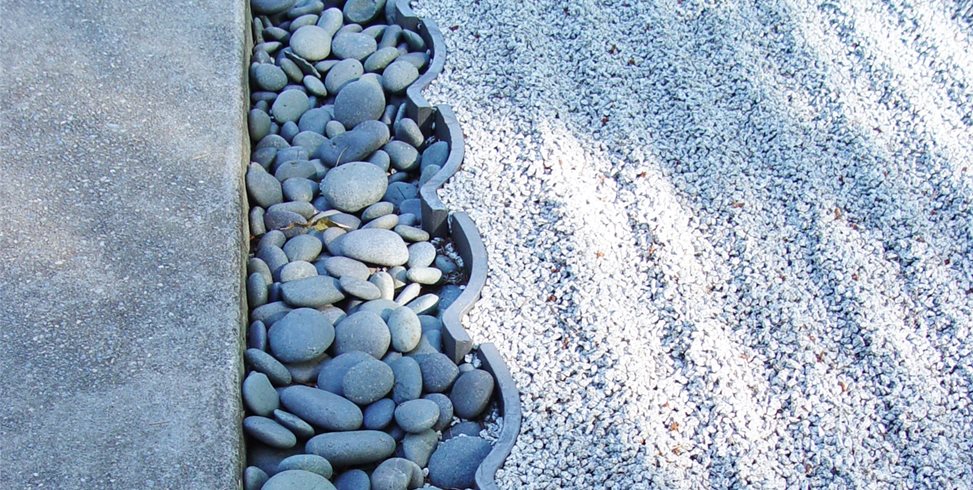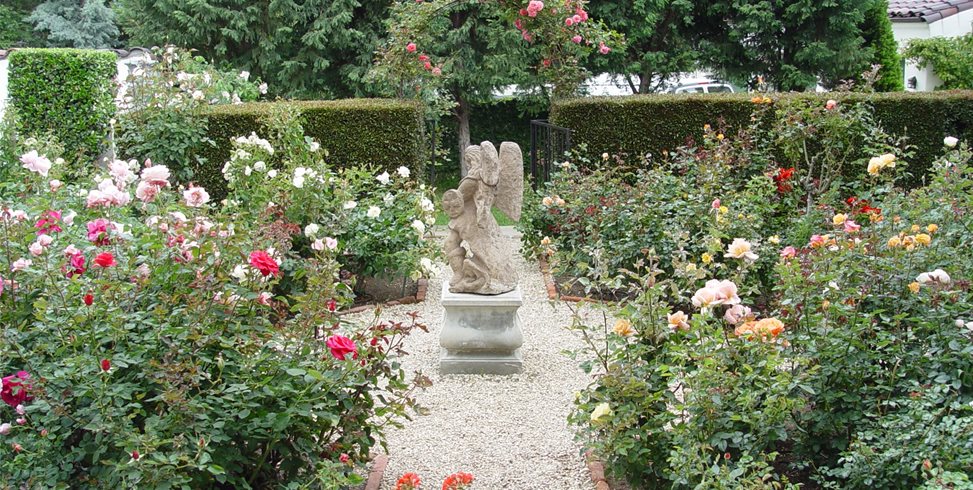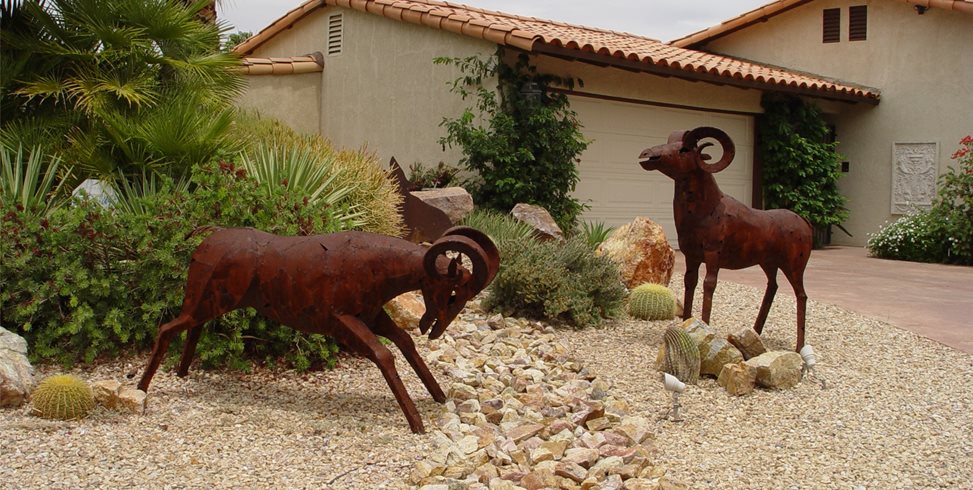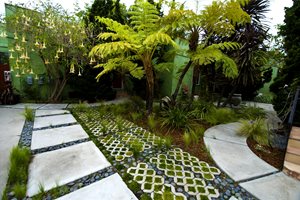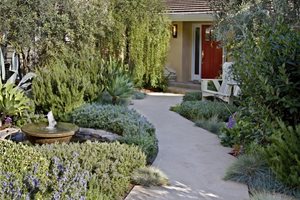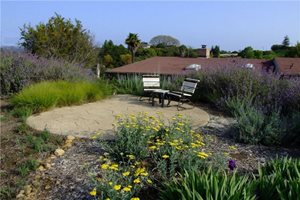The Basics of Decorative Gravel
Three factors to consider when using decorative stone in your landscapeDecorative gravel is becoming the green, sustainable alternative to lawn. It's also a useful problem solver for dozens of scenarios in the ordinary landscape. In some regions such as the Southwest, it's long been in use for surfacing open spaces in sparsely planted desert gardens. In the 1970s, colored gravel and evergreens became the low maintenance solution to prolonged drought. Today new and innovative ideas for gravel in the landscape are implemented to create unique design compositions, to save water and eliminate high maintenance lawns.
Before you decide on using gravel in your landscape, consider the following factors that influence availability, longevity and cost.
Material Basics
Crushed Gravel
This is any gravel product that is crushed from larger rock in a quarry. Once crushed, the material is fed through a sieve to separate out particles of a certain size. Sieves can range from two inch particles to those less than a quarter inch known as "fines". Crushed gravel has sharp edges that help it remain in place, particularly for walks and driveways on a gentle slope. When weighted down the particle's sharp edge is pressed into the ground for anchorage.
River Run Gravel
The term river run is applied to any type of gravel composed of naturally occurring rounded particles. These may be shaped by eons in the surf or fast moving river water. This product is not changed in any way except size. It too is poured through sieves to achieve a certain size overall. Some river run gravels from beaches are available in a single size while others such as the black Mexican beach pebbles can range widely in size.
- Pro Tip: The rounded shape of river run gravel allows it to travel. Over time it will build up on the outside of curves or in the low spots. It is not advised for sloping surfaces of any kind.
Cobble
Cobble is technically a gravel but is much larger and used a different way in the landscape. These larger stones are either crushed or river run, and must be hand placed due to their size. They are not suitable for walking surfaces for pets or people, but their chief value is dividing large fields of small gravels with a color and or textural difference.
- Pro Tip: Cobbles and fields of larger gravel suffer from organic matter build up in the pockets between particles. This decomposes into humus which is an ideal place for weeds to germinate. Small gravel that can be easily raked allows you to remove the build-up before seeds take hold there.
Aesthetic Basics
Color
In times past, the primary forms of gravel were made of crushed grey granite which are known as utility "aggregates" used to bind concrete. Therefore granite is the most widely distributed material available in many different sizes from pea gravel to cobbles. For many projects this is a functional solution, but the uniform grey offers little in the way of style.
Today's gravel demand has brought a huge range of color options to your local supplier. The contemporary landscape utilizes earth tones to blend with masonry and other paving materials. Mixed gravels contain many shades of color and some achieve a jewel-like quality particularly those which contain agate and feldspar parent material. These make excellent material for smaller projects seen close up where the color and sparkle is best appreciated. For a larger landscape, gravel color should work hand in hand with the overall color palette of the project, or with that of any existing natural stone on site. Think twice before selecting white as it tends to produce glare. Very dark colors tend to gobble up light and produce a very flat character over all.
- Pro Tip: Black gravel will show every speck of litter just as a carpet would, so over time it loses its original dramatic color. The sustainability of this material is questionable at best. Therefore, choosing earth tone gravels that tend to blend in with organic matter will be far more maintainable over time.
Thickness
When gravel is used in lieu of lawn, for example, it must be laid out in a layer thick enough to cover completely. If too thin, bald spots inevitably occur, and where it thins out you may develop a weed problem as well. The thickness of the layer is partly dictated by the application. For example, crushed gravel to cover a driveway may require a thicker layer in order to withstand repeated vehicular passes. Covering a square that was once lawn may only need a two inch thick layer of fine gravel. The volume you need is based on square footage times the recommended thickness.
Underlayer
In those 1970s gravel landscapes, the key was to lower maintenance by using gravel to block weed growth. Back then thick black plastic was laid out on bare ground, and the gravel spread on top. It wasn't long before the plastic broke down and weeds came up through the cracks. Today woven weed barrier fabric is proving a far superior underlayer for gravel. It allows air and water to go down through to the soil, while blocking light so weeds don't sprout. When plants were integrated into the plastic and gravel system, problems arose because rain water could not enter the root zone of new or existing plants. The plastic also created an anaerobic condition in the soil where lack of oxygen caused it to literally ferment. The result was dead plants, both new and existing.
- Pro Tip: When choosing gravel for a driveway, select a larger particle size that won't get stuck in tire treads. When choosing gravel for a walkway, the smaller the particle the easier it will be for women in high heels or those with disabilities.
Cost Basics
Gravel is cheap, but moving it is increasingly expensive as fuel prices rise. Due to the weight of this product, heavy equipment is necessary to load and haul it. The first haul is from the point of origin at the quarry to your local rock yard. The second haul is from the rock yard to your yard. Original transportation costs can be integrated into the per ton price of a gravel with additional delivery fees passed on to the consumer. Sometimes pricey gravel that is locally mined will cost less than ordinary gravel from further afield. Therefore, consider locally mined gravel the greenest, most sustainable choice as well as the best value.
Gravel Prices:
- Utility gravels: Average $25 to $50 per ton, plus delivery charges
- Decorative gravels: Average $50 to $90.00 per ton, plus delivery charges
- Average gravel covers 80 to 120 S.F. per ton at 2" thick
| Basic Particulate Sizing Chart | ||
|---|---|---|
Screenings |
1/8 inch or smaller |
Similar to coarse sand |
Pea |
1/4 to 1/8 inch |
Workable by hand |
Common |
3/4 to 1 inch |
Workable by hand |
Largest |
2 1/2 to 4 inches |
Not workable by hand |
* These are averages, but intermediate sizing is available for many products.

 Backyards
Backyards
 Front Yards
Front Yards
